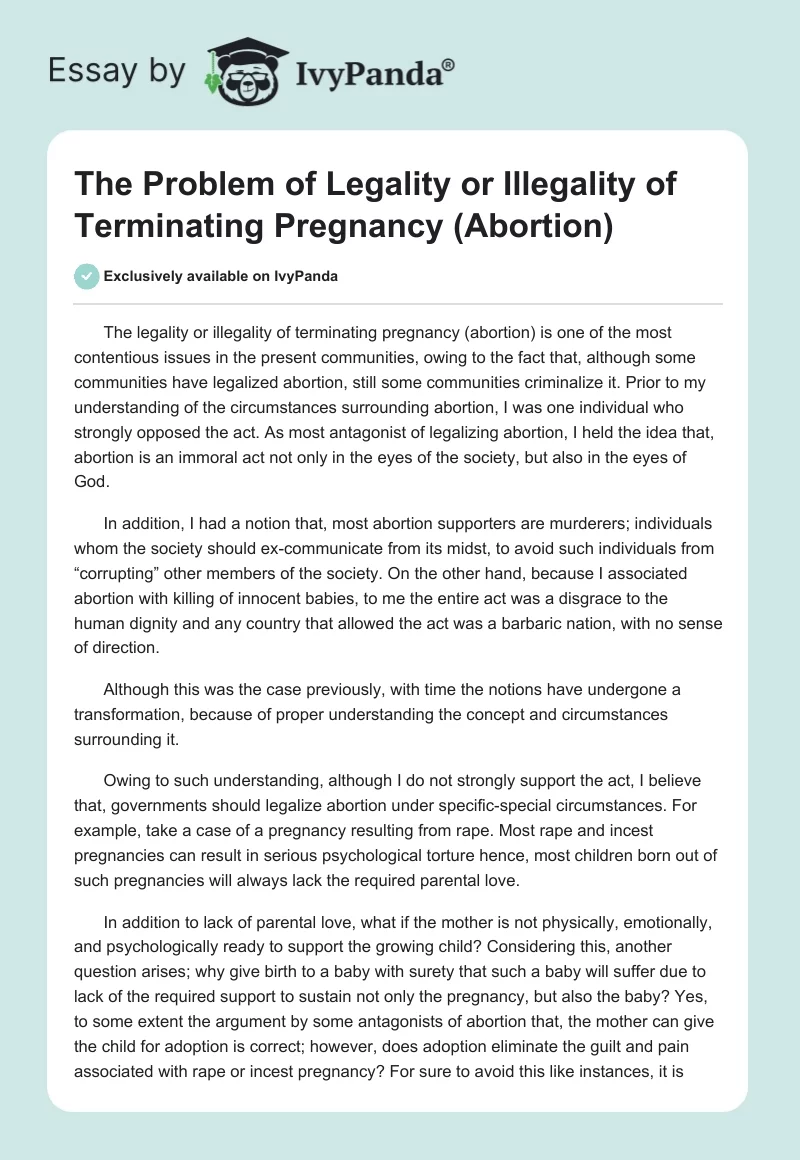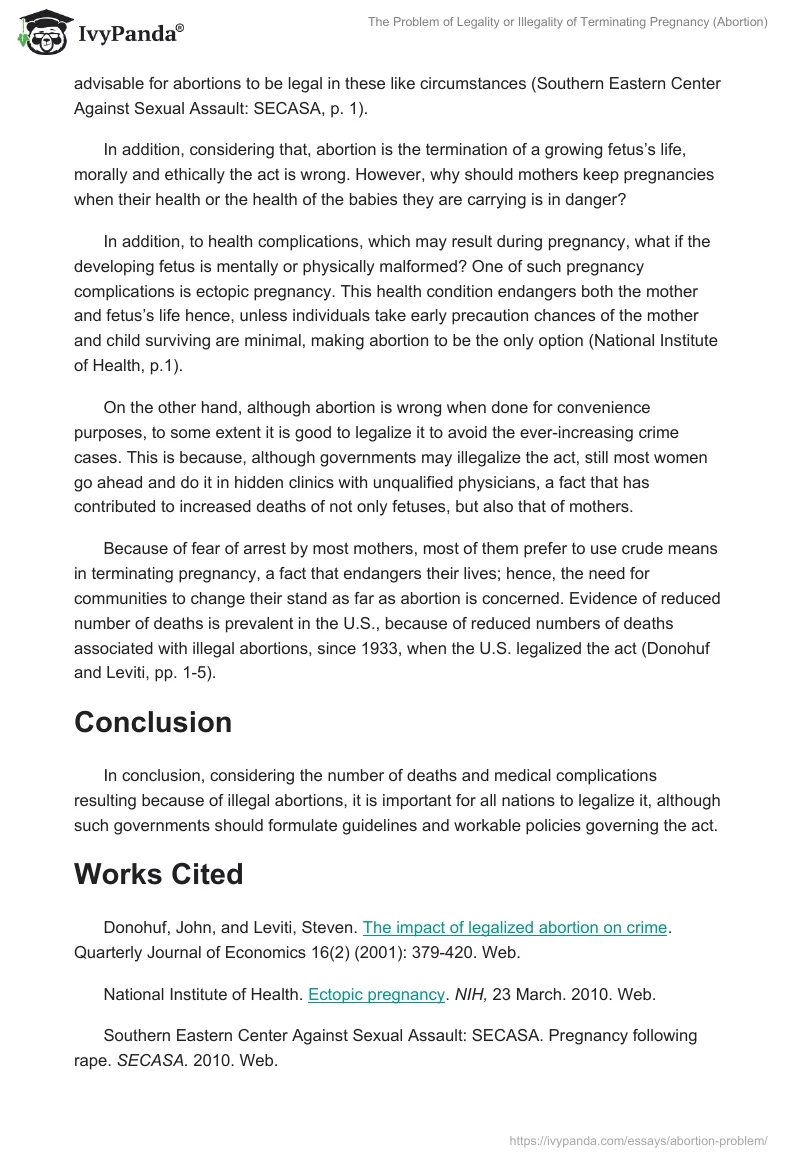The legality or illegality of terminating pregnancy (abortion) is one of the most contentious issues in the present communities, owing to the fact that, although some communities have legalized abortion, still some communities criminalize it. Prior to my understanding of the circumstances surrounding abortion, I was one individual who strongly opposed the act. As most antagonist of legalizing abortion, I held the idea that, abortion is an immoral act not only in the eyes of the society, but also in the eyes of God.
In addition, I had a notion that, most abortion supporters are murderers; individuals whom the society should ex-communicate from its midst, to avoid such individuals from “corrupting” other members of the society. On the other hand, because I associated abortion with killing of innocent babies, to me the entire act was a disgrace to the human dignity and any country that allowed the act was a barbaric nation, with no sense of direction.
Although this was the case previously, with time the notions have undergone a transformation, because of proper understanding the concept and circumstances surrounding it.
Owing to such understanding, although I do not strongly support the act, I believe that, governments should legalize abortion under specific-special circumstances. For example, take a case of a pregnancy resulting from rape. Most rape and incest pregnancies can result in serious psychological torture hence, most children born out of such pregnancies will always lack the required parental love.
In addition to lack of parental love, what if the mother is not physically, emotionally, and psychologically ready to support the growing child? Considering this, another question arises; why give birth to a baby with surety that such a baby will suffer due to lack of the required support to sustain not only the pregnancy, but also the baby? Yes, to some extent the argument by some antagonists of abortion that, the mother can give the child for adoption is correct; however, does adoption eliminate the guilt and pain associated with rape or incest pregnancy? For sure to avoid this like instances, it is advisable for abortions to be legal in these like circumstances (Southern Eastern Center Against Sexual Assault: SECASA, p. 1).
In addition, considering that, abortion is the termination of a growing fetus’s life, morally and ethically the act is wrong. However, why should mothers keep pregnancies when their health or the health of the babies they are carrying is in danger?
In addition, to health complications, which may result during pregnancy, what if the developing fetus is mentally or physically malformed? One of such pregnancy complications is ectopic pregnancy. This health condition endangers both the mother and fetus’s life hence, unless individuals take early precaution chances of the mother and child surviving are minimal, making abortion to be the only option (National Institute of Health, p.1).
On the other hand, although abortion is wrong when done for convenience purposes, to some extent it is good to legalize it to avoid the ever-increasing crime cases. This is because, although governments may illegalize the act, still most women go ahead and do it in hidden clinics with unqualified physicians, a fact that has contributed to increased deaths of not only fetuses, but also that of mothers.
Because of fear of arrest by most mothers, most of them prefer to use crude means in terminating pregnancy, a fact that endangers their lives; hence, the need for communities to change their stand as far as abortion is concerned. Evidence of reduced number of deaths is prevalent in the U.S., because of reduced numbers of deaths associated with illegal abortions, since 1933, when the U.S. legalized the act (Donohuf and Leviti, pp. 1-5).
Conclusion
In conclusion, considering the number of deaths and medical complications resulting because of illegal abortions, it is important for all nations to legalize it, although such governments should formulate guidelines and workable policies governing the act.
Works Cited
Donohuf, John, and Leviti, Steven. The impact of legalized abortion on crime. Quarterly Journal of Economics 16(2) (2001): 379-420. Web.
National Institute of Health. Ectopic pregnancy. NIH. 2010. Web.
Southern Eastern Center Against Sexual Assault: SECASA. Pregnancy following rape. 2010. Web.


